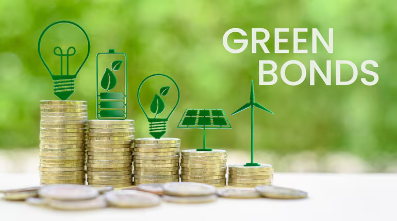Finance
Sovereign Green Bonds — The policy and FX angles for EM investors.

Sovereign green bonds have rapidly become a cornerstone of sustainable finance, especially in emerging markets (EMs) where governments are looking to mobilize international capital for climate and development goals. These instruments allow sovereigns to earmark proceeds for projects such as renewable energy, climate-resilient infrastructure, and nature conservation, while signaling policy commitment to sustainability. For investors, sovereign issuance is often viewed as a litmus test of a country’s credibility on climate policy—when a government links its borrowing strategy to its net-zero or NDC commitments, it provides a clearer roadmap for long-term policy direction. This is particularly significant in EMs, where climate transition risks are high, and the need for concessional and blended finance is acute.
From an FX and macroeconomic perspective, sovereign green bonds in EMs carry unique dynamics. Currency risk remains one of the main barriers for global investors, especially when bonds are issued in local currency. Yet, green issuance can help stabilize flows by attracting a stickier investor base—including development banks, ESG-focused funds, and sovereign wealth funds—that are less prone to short-term speculative trading. Over time, this can reduce volatility and support currency stability. At the same time, however, the credibility of the “green” label is critical: if investors perceive the use of proceeds as weak or poorly monitored, the reputational damage may amplify capital flight rather than reduce it.
For EM policymakers, sovereign green bonds are not just about fundraising—they are also policy signaling tools. Successful issuance can catalyze the domestic green finance ecosystem, encouraging local banks and corporates to follow with their own sustainable bonds. It can also influence the development of national taxonomies, disclosure standards, and climate policies. Countries like Chile, Egypt, and Indonesia have already demonstrated how sovereign green bonds can anchor broader transition strategies, tying external financing to domestic policy goals. The challenge lies in balancing ambition with credibility: investors want assurance on governance, impact reporting, and alignment with international principles such as ICMA’s Green Bond Principles or the EU Green Bond Standard.
For EM investors, the opportunity is double-edged. On one hand, sovereign green bonds offer access to impact-driven investments with potential diversification benefits, and in some cases, yield premia compared to developed market issuers. On the other, they carry risks tied to political stability, policy consistency, and FX exposure. Careful evaluation of the policy framework, fiscal trajectory, and reporting commitments is essential to distinguish credible issuers from those treating green bonds as a branding exercise.
In the long run, sovereign green bonds could become a bridge between climate finance and EM capital markets, helping channel global capital where it is most needed while reinforcing policy credibility. But for investors, the key lies in not just buying the label, but in analyzing the policy architecture and FX implications that ultimately determine whether these instruments deliver sustainable returns.

At least 20 people killed in Russian glide bomb attack on village in eastern Ukraine

Transition vs. Physical Risk A decision tree for which risk dominates by industry.

Getting Assurance-Ready — Controls and evidence trails for sustainability data.
trending posts

TOP Categories
Google Web Reporters













3 comments
David Bowie
3 hours agoEmily Johnson Cee
2 dayes agoLuis Diaz
September 25, 2025